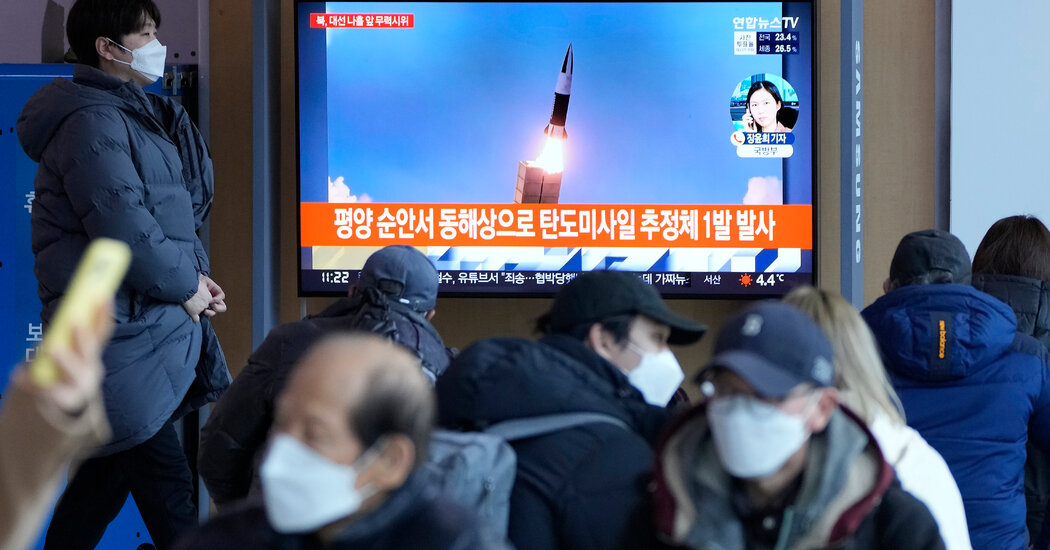
SEOUL — North Korea launched an unidentified projectile on Wednesday, but it apparently failed “immediately after liftoff,” the South Korean military said.
The projectile was launched at 9:30 a.m. from Sunan, outside Pyongyang, the capital, the South Korean military said in a brief statement. But the rocket exploded midair after reaching an altitude of less than 12 miles, South Korean defense officials said.
The U.S. Indo-Pacific Command said the launch was a “ballistic missile” test and called on North Korea to “refrain from further destabilizing acts.”
The North launched ballistic missiles from the same site at Sunan on Feb. 27 and March 5, American and South Korean officials said. North Korea said those tests had been part of its preparation to launch a military reconnaissance satellite — a task that its leader, Kim Jong-un, assigned to his government during a Workers’ Party congress in January last year.
But Washington and Seoul later said that North Korea had actually been conducting scaled-down tests of its new Hwasong-17 intercontinental ballistic missile under the disguise of launching a satellite. The Hwasong-17, the North’s largest known I.C.B.M., was first unveiled during a military parade in October 2020 but had never been tested before.
North Korea has conducted 10 missile or projectile tests so far this year, more than in all of last year. But the isolated country has often failed in its missile tests, especially when it has been developing a new weapon.
The last failure of a missile launch was reported in August 2017, when one of three short-range ballistic missiles launched by the North blew up immediately after liftoff.
The launch on Wednesday came as the United States and its allies watched Sunan closely amid signs that North Korea was preparing to fire another missile from the site. The Pentagon had said that the North’s earlier tests there were to evaluate the Hwasong-17 system “before conducting a test at full range in the future, potentially disguised as a space launch.”
The U.N. Security Council has banned North Korea from launching a rocket to place a satellite into orbit because the country has used such rockets to develop its long-range ballistic missiles.
It was unclear whether the launch on Wednesday was another preparatory test or a full-range launch. In the earlier tests, the missiles flew 168 to 186 miles. Missile experts said that in those tests, North Korea most likely had tested its first-stage booster rocket for the three-stage Hwasong-17 I.C.B.M.
In anticipation of the launch, the U.S. Indo-Pacific Command ordered intensified surveillance in the Yellow Sea between China and the Korean Peninsula, as well as enhanced readiness among its ballistic missile defense forces in the region.
This week, the Seventh Fleet of the U.S. Navy said that aircraft taking off from the USS Abraham Lincoln had conducted a drill in the Yellow Sea. The United States military command in South Korea also said it had conducted a missile defense exercise.




